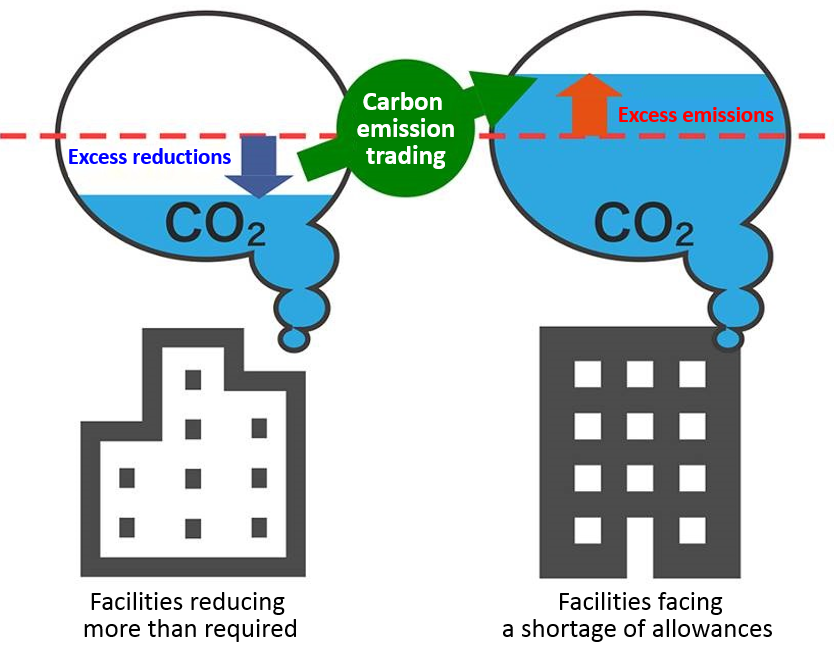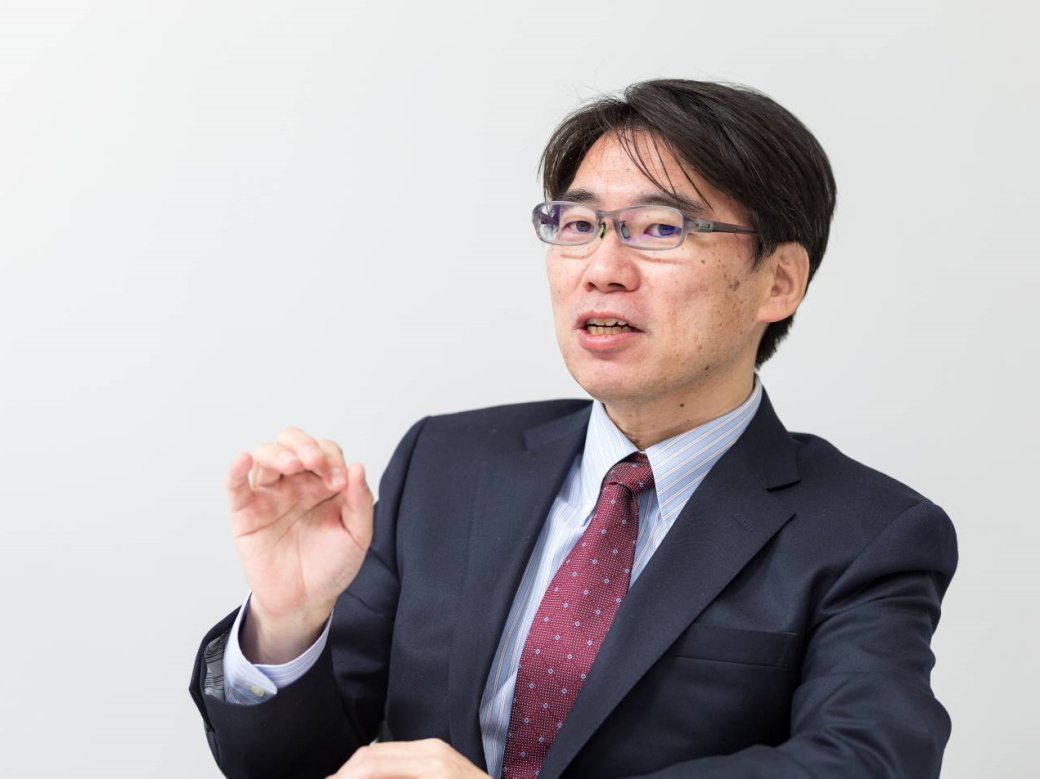Waseda Frontline Research Feature Vol. 20: Applying the power of economics to resolve environmental issues (Part 1 of 2)
Mon, Sep 3, 2018-
Tags
Environmental Economist
Toshihide Arimura, Professor, Faculty of Political Science and Economics
Part 1: Transitioning environmental issues from “outside” the marketplace to “inside” the marketplace
 The economic activities of human kind and preservation of the global environment are generally considered to be mutually exclusive. However, if we are able to fully harness the learnings of economics, I believe we may be able to combine efforts to preserve the environment and economic activities. Professor Toshihide Arimura, who specializes in environmental economics at the Faculty of Political Science and Economics at Waseda University, is working to establish methods to resolve environmental issues that make use of market forces and introduce these into the social framework by transitioning the concept of the environment, generally believed to be exclusive of the markets, into them. How can the learnings of economics contribute to resolving environmental issues? These next two releases will cover his research efforts and his thoughts on that research. (Date of interview: December 08, 2017)
The economic activities of human kind and preservation of the global environment are generally considered to be mutually exclusive. However, if we are able to fully harness the learnings of economics, I believe we may be able to combine efforts to preserve the environment and economic activities. Professor Toshihide Arimura, who specializes in environmental economics at the Faculty of Political Science and Economics at Waseda University, is working to establish methods to resolve environmental issues that make use of market forces and introduce these into the social framework by transitioning the concept of the environment, generally believed to be exclusive of the markets, into them. How can the learnings of economics contribute to resolving environmental issues? These next two releases will cover his research efforts and his thoughts on that research. (Date of interview: December 08, 2017)
Giving economic value to the environment
“Environmental economics”, the field in which I specialize, is one applied field of economics. When the majority of people think of economics, they probably think of “making money”, however this is not necessarily true. Economics may also been seen as a field of study delving into “how to make the most effective use of limited resources”. The concept behind environmental economics, is attempting to resolve a variety of environmental issues, not through a planned economy or policies formulated by the government, but through use of the marketplace.
Because the “environment” is generally considered exclusive of the “marketplace” when human kind behaves in a normal manner, it is impossible to devise solutions to environmental issues using the marketplace. In order to resolve environmental issues, the concept of transitioning the concept of the “environment” into the “marketplace”, in other words giving economic value to the environment is important. This is referred to as “internalization of external diseconomies”. In Japan, the concept behind environmental economics, including this train of thought, first appeared in the 1960s, a period when air and water pollution worsened and pollution in general became a social issue. In the time ensuing, from the 1980s, acid rain, global warming and climate change, etc. garnered attention as environmental issues of a global scale and the field of environmental economics took on a whole new level of importance. Environmental economists focused on post-event solutions in relation to existing, local issues of pollution. In line with the globalization of environmental issues in the time following, these environmental economists began to focus on more pre-event, or preventive solutions. Further, in years past, economists were more focused on optimization of profits based on the model of the rational consumer, also known as the “economic man”, however, this has gradually changed to analysis based on realistic observation of the behavior of organizations and the consumer.

Professor Toshihide Arimura
Emissions trading – One form of carbon pricing
One area of my research is “carbon pricing”. This is the process of allocating a value to carbon dioxide (CO2) in an effort to reduce carbon dioxide emissions by making corporations and households accountable for the amount of CO2 they release into the atmosphere. The expectation behind this concept is that if releasing carbon dioxide into the atmosphere costs money, the consumer behavior of corporations and households will change to become more environmentally friendly.
For example, one form of carbon pricing that I have focused on is “emissions trading”. This is a scheme in which units, or permits of emissions of pollutants, such as carbon dioxide, that have an impact on the environment, are traded between governments and corporations. During my time studying in the United States in the 1990s, the US led the way, implementing emissions trading for sulfur dioxide (SO2), as part of measures to combat acid rain. I saw this idea of combining the concept of market economics and environmental measures, concepts that often oppose each other, to reach a solution as an innovative concept and prompted me to write my doctoral dissertation on this topic.

Figure: Overview of emissions trading. Corporations that reduce their emissions to below the set limit of carbon dioxide emissions (dotted red line) are able to sell on the surplus of units to corporations that were unable to reduce emissions to their set limit.
Validation of a “definitive result” from government emissions trading schemes
Following are some examples of my recent research into carbon pricing.
One of these is an analysis of the effect of emissions trading in Tokyo. Presently in Japan, the Tokyo Metropolitan Government and Saitama Prefecture are implementing an emissions trading scheme for green house gases. While the amount of carbon dioxide emissions is actually falling, there has been insufficient validation that this is in fact a result of the emissions trading scheme. There are people who believe this is a result of the increase in electricity prices in the wake of the Great East Japan Earthquake that hit Japan in 2011. In response, I gathered data from office buildings of corporations all across Japan to perform a factor analysis. Based on my analysis, I reached the conclusion that “approximately half the reduction in emissions was a result of the emissions trading scheme”. This demonstrates a definitive result.
Government officials show a tendency to be content simply by implementing new policy. However, it is important from a social viewpoint that validation is made to ensure that implemented policies are really functioning effectively.

Photo: “Waseda University Research Council Forum 2017 – Paris Agreement and International Trends of Carbon Pricing” held at the Nihonbashi Campus of Waseda University in December 2017 (Sponsors: Organization for University Research Initiatives, Waseda University and the Research Institute for Environmental Economics and Management) The event was covered by a large media contingent. Professor Arimura spoke on the subject of “Following global trends! Emissions trading: The efforts of the Tokyo Metropolitan Government and Saitama Prefecture” (Source: Professor Arimura)
Realistic carbon pricing
One more area of my research is looking at carbon pricing schemes that will be realistically accepted by society and making policy recommendations.
Society is reluctant to accept a carbon pricing policy when recommendations made by economists for the most effective policy are endorsed by government because they feel they have to reduce emissions to achieve set targets. It is important to make recommendations that achieve a balance with what is occurring in the real world. For example, one method is an “Up-dating emissions trading scheme” . This is a scheme under which emissions are traded based on information that is updated based on current conditions. This was proposed in the United States under the Obama Administration and based on this, I made recommendations to the Democratic Party governing Japan at the time.
From 2006 through to 2008, I was a visiting research fellow at Resources for the Future in the United States. Over this period, I saw a variety of proposals to combat the issue of climate change and this helped me reaffirm the importance of research aimed at bridging the gap between the real world and academia and I came to feel strongly about feeding the results of my research back to society.

Photo: Forum held at the Walter H. Shorenstein Asia-Pacific Research Center, Stanford University, United States in October 2017, “Confronting Climate Change” (Source: Professor Arimura)
Examining “double dividends” for carbon taxes
In December 2015, 18 years on from the Kyoto Protocol, the “Paris Agreement” was adopted as a new, international framework to combat climate change. Since then, debates are emerging with long-term perspectives that look as far ahead as 2050 and beyond. As one of the most recent movements in Japan is the “Commission for Carbon Pricing” run by the Ministry of the Environment of Japan. I attend meetings of this commission as a committee member, making recommendations for the introduction of a “carbon tax”, aimed at imposing a tax on carbon, petroleum and natural gas, etc. in addition to emissions trading schemes. In FY2018, I will also participate in a discussion held by the “Central Environment Council, Global Environment Subcommittee, Subcommittee on the use of Carbon Pricing”.
As stated in my proposal, the concept of “double dividends” is particularly applicable to carbon tax. To date, environmental economists have thought of ways to change public behavior by imposing environmental taxes, such as a carbon tax. However, little thought has been given to how to put the collected taxes to use. I believe there must be a way of using these collected taxes to stimulate economic activity. If this can be achieved, I feel that the resultant improvements, both in terms of reducing emissions of carbon dioxide in order to protect the environment and stimulation of economic activity, will be more significant or pronounced. This is the concept behind “double dividends”. For example, if we can allocate the tax revenue from carbon tax to reducing corporate taxes, reducing the burden of social insurance premiums and reducing income tax, etc., it will be possible to achieve economic growth while also creating a green economy.
Over the long term, it is my hope to consider policy design that will ultimately be beneficial to the environment and economy of not only Japan, but also the world.
In the next part, I will be introducing research into measures to combat indoor air pollution in developing countries.
Profile
 Toshihide Arimura
Toshihide Arimura
After obtaining his B.A. at the Faculty of Liberal Arts, the University of Tokyo and his M.S. in Environmental Sciences at the University of Tsukuba, Toshihide completed a doctoral degree in Economics at the University of Minnesota, where he obtained his Ph.D. in 2000. In the time following, Toshihide served as Assistant Professor at Sophia University, Department of Economics and Part-time Lecturer at the School of Social Sciences, Waseda University, while also serving as a Visiting Research Fellow at the Economic and Social Research Center, Executive Director of the Society for Environmental Economics and Policy Studies and as Visiting Research Fellow at Resources for the Future (Abe Fellow), and so on. From 2012 to present, Toshihide has served as Professor at the Faculty of Political Science and Economics at Waseda University. A long list of publications includes “The Frontier of Environmental Economics” (Nippon Hyoronsha) and co-author of “Introduction to Environmental Economics” (Chuokoron-Shinsha). Toshihide also plays an integral role at the Research Institute for Environmental Economics and Management, Waseda University.
Major research achievements
Journal articles
- Toshi H. Arimura, Hajime Katayama, Mari Sakudo (2016) “Do Social Norms Matter to Energy-Saving Behavior? Endogenous Social and Correlated Effects,” Journal of the Association of Environmental and Resource Economists, Vol. 3 (3), pp. 525-553.DOI: 10.1086/686068
- Toshi. H. Arimura, Nicole Darnall, Rama Ganguli and Hajime Katayama (2016.1) “The Effect of ISO 14001 on Environmental Performance: Resolving Equivocal Findings,” Journal of Environmental Management, Vol.166(15), pp.556-566.
- Shiro Takeda, Toshi.H.Arimura, Hanae Tamechika, H, Carolyn Fischer and Alan K. Fox (2014) “Output-based allocation of emissions permits for mitigating the leakage and competitiveness issues for the Japanese economy,” Environmental Economics and Policy Studies, Vol.16, pp.89-110.DOI 10.1007/s10018-013-0072-8
- Emiko Inoue, Toshi.H.Arimura and Makiko Nakano (2013) “A new insight into environmental innovation: Does the maturity of environmental management systems matter? ,” Ecological Economics, Vol.94, pp.156-163.
- Makoto Sugino, Toshi.H.Arimura and Richard D. Morgenstern (2013) “The effects of alternative carbon mitigation policies on Japanese industries,” Energy Policy, Vol.62, pp.1254-1267.
- Toshi.H.Arimura, Shanjun Li, Richard G. Newell and Karen Palmer (2012) “Cost-Effectiveness of Electricity Energy Efficiency Programs,” The Energy Journal , Vol.33. No.2, pp63-99. DOI: 10.5547/01956574.33.2.4
- Toshi.H.Arimura, Nicole Darnall and Hajime Katayama (2011) “Is ISO 14001 a Gateway to More Advanced Voluntary Action? A Case for Green Supply Chain Management,” Journal of Environmental Economics and Management 61, pp.170-182.doi:10.1016/j.jeem.2010.11.003
- Toshi.H.Arimura, Akira Hibiki and Hajime Katayama (2008) “Is a Voluntary Approach an Effective Environmental Policy Instrument? A Case for Environmental Management Systems,” Journal of Environmental Economics and Management, 55(3), pp.281-295.doi:10.1016/j.jeem.2007.09.002
Publications
- 「環境経済学のフロンティア」日本評論社(2017年) 有村俊秀・片山東・松本茂編著
- “An Evaluation of Japanese Environmental Regulations –Quantitative Approaches from Environmental Economics-“ Springer (2015) Toshi. H. Arimura・Kazuyuki Iwata
- 「温暖化対策の新しい排出削減メカニズム :二国間クレジット制度を中心とした経済分析と展望」日本評論社(早稲田大学現代政治経済研究所研究叢書41)(2015年)有村俊秀編
- 「地球温暖化対策と国際貿易-排出量取引と国境調整措置をめぐる経済学・法学的分析」東京大学出版会(2012)pp.1-312、有村俊秀・蓬田守弘・川瀬剛志編
- 「排出量取引と省エネルギーの経済分析:日本企業と家計の現状」日本評論社(2012)有村俊秀・武田史郎編著
- 「環境規制の政策評価-環境経済学の定量的アプローチ-」SUP上智大学出版/ぎょうせい(2011)有村俊秀・岩田和之
- 「入門環境経済学~環境問題解決へのアプローチ」中央公論新社(2002)日引聡・有村俊秀
Editorial and lecture materials for the general public
- Toshi.H.Arimura, (2017) “Carbon Pricing: Lessons from Subnational Success,” Presented at the ABE Fellowship Program: Confronting Climate Change: What can the US and JAPAN Contribute to Creating Sustainable Societies? pp. 23-26.
- 有村俊秀「環境問題を経済学で解決:排出量取引って何?(特集 経済学のリテラシーを高めよう)」『経済セミナー』No.701(2018.5)pp. 35- 39.(Kindle版もあり)














